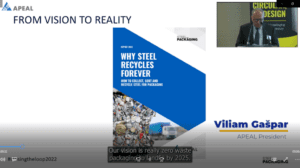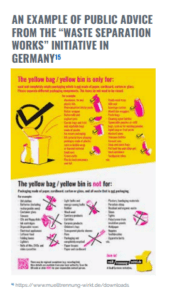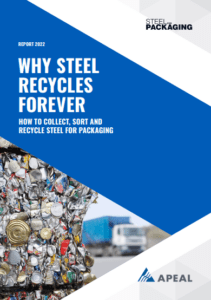Why involving consumers is key to closing the loop of Steel Packaging recycling
By Alexis Van Maercke
Optimised separate collection is our preferred route to increase both the quantity and quality of recycling, as extensively covered in our latest report Why Steel Recycles Forever: How To Collect, Sort And Recycle Steel For Packaging.
But even the best infrastructure relies on packaging being properly sorted at home and on the go. That’s why consumer involvement is our sixth and final key recommendation to policymakers in order to close the loop on steel packaging recycling.
During our recent conference From Vision to Reality; Closing the loop on steel packaging recycling, all three panels mentioned the critical role of consumer engagement. The panel featuring Joachim Quoden, Managing Director of EXPRA, Clarissa Morawski, CEO and co-founder of the Reloop Platform and Tim Moerman, Sustainability & ESG Director Europe, Anhauser-Busch Inbev (ABInBev) highlighted the specific example of steel closures and ends which are the most regularly put in the wrong bin by citizens.
panels mentioned the critical role of consumer engagement. The panel featuring Joachim Quoden, Managing Director of EXPRA, Clarissa Morawski, CEO and co-founder of the Reloop Platform and Tim Moerman, Sustainability & ESG Director Europe, Anhauser-Busch Inbev (ABInBev) highlighted the specific example of steel closures and ends which are the most regularly put in the wrong bin by citizens.
Watch more in our event’s highlights video here.
In theory, steel packaging is easy to sort: simply empty the packaging and put it in the correct bin. However, awareness raising among citizens is vital to achieve this and APEAL recommends that simple and easy-to-understand sorting instructions are delivered via repeated communications campaigns to motivate and incentivise participation.
 These campaigns should cover two key areas.
These campaigns should cover two key areas.
The first is to let consumers know of the existence of the steel packaging recycling schemes that are available to them. The pertinent facts to include are ‘when’ and ‘where’. Where should I put my waste and when will it be collected?
The second communication stream should encompass the ‘how’ and ‘why’. How do I sort my waste and why should I do it?
The first points are the simplest to explain, though sorting instructions vary from one Member State to another and sometimes from one region to another. The second stream of messages is more difficult, but perhaps more important as understanding the importance of the action, and how to get it right, can increase both participation and effectiveness.
For example, information campaigns covering the ‘how and why’ should inform consumers not to place packaging items inside one another as co-mingled separate collection scenarios carry a greater risk of cross-contamination. And to avoid ‘wishcycling’, where citizens include items that they hope are recyclable, campaigns should also include examples of what is not accepted so that a maximum of other contaminants are removed.
In general, consumers are more aware than ever of the need to act responsibly when it comes to environmental issues and sustainability campaigns will resonate with a broad cross section of society through Europe. It means that even the communication of simple figures such as the resource savings associated with recycling steel, can galvanize individuals to take action and contribute to preventing recyclable materials such as steel going to waste.
 A copy of APEAL’s recycling report can be downloaded here.
A copy of APEAL’s recycling report can be downloaded here.
